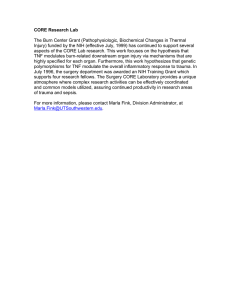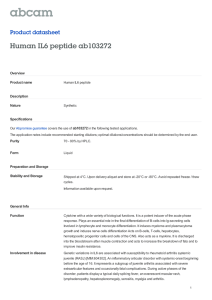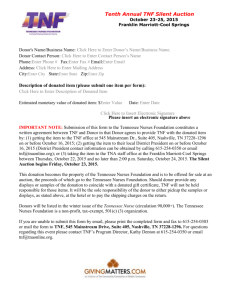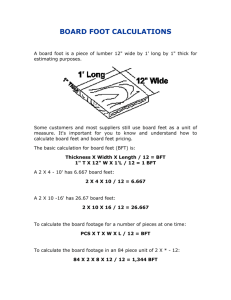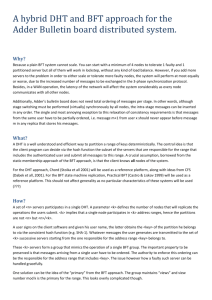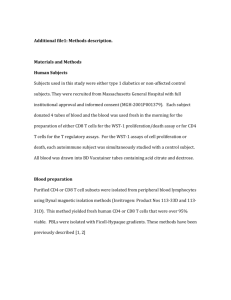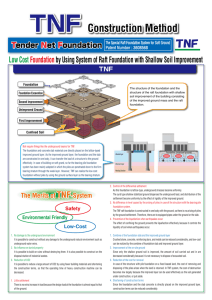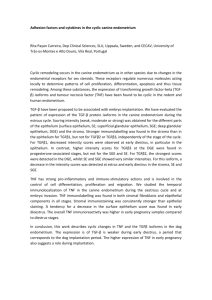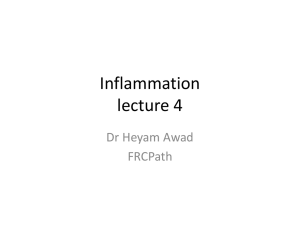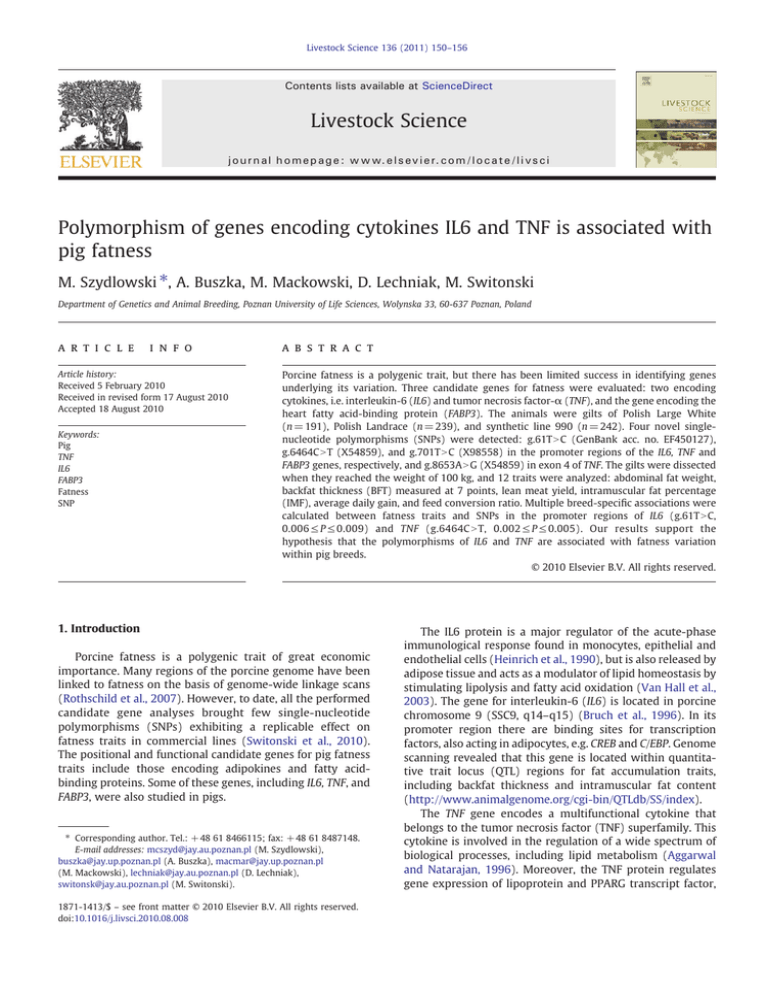
Livestock Science 136 (2011) 150–156
Contents lists available at ScienceDirect
Livestock Science
j o u r n a l h o m e p a g e : w w w. e l s ev i e r. c o m / l o c a t e / l i v s c i
Polymorphism of genes encoding cytokines IL6 and TNF is associated with
pig fatness
M. Szydlowski ⁎, A. Buszka, M. Mackowski, D. Lechniak, M. Switonski
Department of Genetics and Animal Breeding, Poznan University of Life Sciences, Wolynska 33, 60-637 Poznan, Poland
a r t i c l e
i n f o
Article history:
Received 5 February 2010
Received in revised form 17 August 2010
Accepted 18 August 2010
Keywords:
Pig
TNF
IL6
FABP3
Fatness
SNP
a b s t r a c t
Porcine fatness is a polygenic trait, but there has been limited success in identifying genes
underlying its variation. Three candidate genes for fatness were evaluated: two encoding
cytokines, i.e. interleukin-6 (IL6) and tumor necrosis factor-α (TNF), and the gene encoding the
heart fatty acid-binding protein (FABP3). The animals were gilts of Polish Large White
(n = 191), Polish Landrace (n = 239), and synthetic line 990 (n = 242). Four novel singlenucleotide polymorphisms (SNPs) were detected: g.61T N C (GenBank acc. no. EF450127),
g.6464C N T (X54859), and g.701T N C (X98558) in the promoter regions of the IL6, TNF and
FABP3 genes, respectively, and g.8653A N G (X54859) in exon 4 of TNF. The gilts were dissected
when they reached the weight of 100 kg, and 12 traits were analyzed: abdominal fat weight,
backfat thickness (BFT) measured at 7 points, lean meat yield, intramuscular fat percentage
(IMF), average daily gain, and feed conversion ratio. Multiple breed-specific associations were
calculated between fatness traits and SNPs in the promoter regions of IL6 (g.61T N C,
0.006 ≤ P ≤ 0.009) and TNF (g.6464C N T, 0.002 ≤ P ≤ 0.005). Our results support the
hypothesis that the polymorphisms of IL6 and TNF are associated with fatness variation
within pig breeds.
© 2010 Elsevier B.V. All rights reserved.
1. Introduction
Porcine fatness is a polygenic trait of great economic
importance. Many regions of the porcine genome have been
linked to fatness on the basis of genome-wide linkage scans
(Rothschild et al., 2007). However, to date, all the performed
candidate gene analyses brought few single-nucleotide
polymorphisms (SNPs) exhibiting a replicable effect on
fatness traits in commercial lines (Switonski et al., 2010).
The positional and functional candidate genes for pig fatness
traits include those encoding adipokines and fatty acidbinding proteins. Some of these genes, including IL6, TNF, and
FABP3, were also studied in pigs.
⁎ Corresponding author. Tel.: + 48 61 8466115; fax: + 48 61 8487148.
E-mail addresses: mcszyd@jay.au.poznan.pl (M. Szydlowski),
buszka@jay.up.poznan.pl (A. Buszka), macmar@jay.up.poznan.pl
(M. Mackowski), lechniak@jay.au.poznan.pl (D. Lechniak),
switonsk@jay.au.poznan.pl (M. Switonski).
1871-1413/$ – see front matter © 2010 Elsevier B.V. All rights reserved.
doi:10.1016/j.livsci.2010.08.008
The IL6 protein is a major regulator of the acute-phase
immunological response found in monocytes, epithelial and
endothelial cells (Heinrich et al., 1990), but is also released by
adipose tissue and acts as a modulator of lipid homeostasis by
stimulating lipolysis and fatty acid oxidation (Van Hall et al.,
2003). The gene for interleukin-6 (IL6) is located in porcine
chromosome 9 (SSC9, q14–q15) (Bruch et al., 1996). In its
promoter region there are binding sites for transcription
factors, also acting in adipocytes, e.g. CREB and C/EBP. Genome
scanning revealed that this gene is located within quantitative trait locus (QTL) regions for fat accumulation traits,
including backfat thickness and intramuscular fat content
(http://www.animalgenome.org/cgi-bin/QTLdb/SS/index).
The TNF gene encodes a multifunctional cytokine that
belongs to the tumor necrosis factor (TNF) superfamily. This
cytokine is involved in the regulation of a wide spectrum of
biological processes, including lipid metabolism (Aggarwal
and Natarajan, 1996). Moreover, the TNF protein regulates
gene expression of lipoprotein and PPARG transcript factor,
M. Szydlowski et al. / Livestock Science 136 (2011) 150–156
151
which play an important role in adipogenesis. The TNF gene
was assigned to SSC7, close to the centromere (Solinas et al.,
1992). In this region, several QTLs for backfat thickness were
also mapped (http://www.animalgenome.org/cgi-bin/
QTLdb/SS/index).
The heart fatty acid-binding protein gene (FABP3) is a
well-known functional candidate for meat quality traits in the
pig. The FABP3 protein is present in various tissues, such as
cardiac and skeletal muscles. The precise chromosome
location of this gene in SSC6q26 (Szczerbal et al., 2007) is
consistent with its earlier assignment to SSC6 (Gerbens et al.,
1997) and with the presence of QTLs for these traits on SSC6
(Arnyasi et al., 2006). Multiple consensus sequences for
binding regulatory elements, also expressed in adipocytes
(e.g. C/EBP), were described in the promoter region of the
FABP3 gene (Gerbens et al., 1997).
In this paper we evaluate 3 candidate genes (IL6, TNF and
FABP3), their SNPs (particularly in the promoter regions), and
their association with fatness and performance phenotypes.
the log-transformed scale to reduce skewness. Post-weaning
average daily gain was calculated for the fattening period
from 25 to 100 kg live weight. Feed conversion ratio was
calculated as a ratio of consumed feed (kg) and weight gain
during the fattening period (kg).
2. Materials and methods
The PCR-SSCP (single-stranded conformation polymorphism) and PCR-MSSCP (multitemperature single-stranded
conformation polymorphism) analyses of the studied amplicons revealed various patterns for several fragments. The
fragment representing a given pattern was sequenced for a
detailed characterization of the polymorphism. For genotyping at exon 4 of TNF and the promoter of FABP3, the restriction
map of these fragments facilitated the selection of an
appropriate endonuclease to be applied for the PCR-RFLP
test (Table 2). No PCR-RFLP test could be designed for
genotyping at the promoters of IL6 and TNF, and these sites
were typed with the use of PCR-SSCP and PCR-MSSCP
techniques.
2.1. Animals
Gilts used in this experiment lived in 2005–2007 and
originated from one synthetic line 990 (L990, n = 242) and two
breeds: Polish Large White (PLW, n = 191) and Polish Landrace
(PL, n = 239). The gilts descended from 100 sires, 401 dams,
167 maternal grandsires, and originated from 415 litters.
Within a breed, gilts were often half- or full-sibs, but the
average size of full-sib group was only 1.38. L990 was derived
by crossing PLW, Duroc, Hampshire and 3 lines of Landrace
pigs, and has been purebred since 1984. During fattening, the
animals were fed ad libitum with a commercial mixed feed, up
to about 100 kg live weight, then slaughtered and dissected at
a Pig Test Station (Pawlowice, Poland) according to the
procedure described by Rozycki (1996). The average age of
the slaughtered PLW, PL and L990 gilts was 192.5 (SD = 15.99),
176.7 (SD = 22.52) and 191.8 days (SD = 13.56), respectively.
The average live weight was 102.8 kg (SD = 1.67), 102.7 kg
(SD = 1.88) and 102.4 kg (SD = 1.71), respectively. Blood
samples for DNA analyses were collected upon slaughter and
stored at −20 °C.
2.2. Traits
Twelve phenotypic traits were studied: abdominal fat
weight, backfat thickness (BFT) measured at 7 points, lean
meat content, intramuscular fat percentage (IMF), average
daily gain and feed conversion ratio (Table 1). BFT measurement was taken after slaughter with a ruler over the shoulder,
over the back, at the sacrum (points I, II, and III), and at points
C1 (on a vertical line extending from the height of the
longissimus dorsi muscle) and K1 (on a vertical line extending
from a side edge of the longissimus dorsi muscle). A pairwise
phenotypic correlation between BFT measures ranged from
0.21 to 0.71 in PLW, from 0.40 to 0.78 in PL, and from 0.25 to
0.78 in L990. Lean meat content was estimated as described
by Rozycki (1996). Intramuscular fat content was measured
using the SOXTEC® AVANTI 2050 automatic extraction
system (Foss Tecator, Hoganas, Sweden) and analyzed in
2.3. PCR conditions
PCR conditions for the 3 analyzed genes are shown in
Table 2. PCR primers for TNF and FABP3 were based on data
available for the pig (GenBank acc. no. X54859 and X98558,
respectively). The sequence of the pig IL6 5′UTR region was
not available when this study was conducted, so primers for
IL6 were based on the human IL6 sequence (AY170325).
In each case, specific products were obtained, which was
confirmed by DNA sequencing. The porcine IL6 promoter
sequence was reported in the GenBank (EF450127).
2.4. Identification and analysis of polymorphisms
2.4.1. PCR-SSCP and PCR-MSSCP methods to identify
polymorphisms in the considered genes
Concerning IL6 and FABP, the PCR-SSCP analyses were
performed for 16 h at 150 V (10 °C, 9% 49:1 acrylamide gel
with 7% glycerol).
We searched for polymorphisms in the promoter region
and exon 4 of TNF, including 3′UTR. Four pairs of primers
were designed for PCR amplification of 4 fragments, based on
the sequence deposited in the GenBank (X54859). The
amplified fragments were screened for new polymorphisms
with the use of the PCR-MSSCP technique. Conditions of the
MSSCP reaction were as follows: preelectrophoresis: 30 °C,
10 min, 600 V; electrophoresis step 1: 30 °C, 10 min, 100 V;
step 2: 30 °C, 120 min, 40 mA; step 3: 20 °C, 90 min, 40 mA;
and step 4: 4 °C, 120 min, 40 mA. Electrophoresis was run in
9% polyacrylamide gel and stained with the use of 0.2% silver
nitrate solution. Based on the MSSCP patterns, polymorphic
DNA samples were sequenced.
With regard to FABP3, the PCR-SSCP was performed for
16 h at 150 V (10 °C, 9% 49:1 acrylamide gel with 7% glycerol).
The analysis of the PCR product showed various band
patterns, and the sequencing revealed a novel polymorphic
site g.701T N C (X98558).
2.4.2. Sequencing
The obtained PCR products (Table 2) were purified with
the use of a Gene MATRIX Agarose-Out DNA Purification Kit
152
M. Szydlowski et al. / Livestock Science 136 (2011) 150–156
Table 1
Trait means and SD in gilts of 3 populations.
PLW 1 (n = 191)
Trait
Mean
Abdominal fat (kg)
BFT 2 over shoulder (cm)
BFT over back (cm)
BFT sacrum I (cm)
BFT sacrum II (cm)
BFT sacrum III (cm)
BFT point C1 (cm)
BFT point K1 (cm)
Lean meat yield (%)
IMF 3 (%)
IMF (%) log
Average daily gain (g)
Feed conversion ratio (kg)
1
2
3
2
0.57Ab
2.36A
1.29A
1.52A
0.91A
1.38A
0.91
1.13a
59.4A
1.32
0.18
843A
2.89AB
PL 1 (n = 239)
L990 1 (n = 242)
SD
Mean
SD
Mean
SD
0.15
0.48
0.34
0.38
0.26
0.36
0.30
0.35
2.87
0.59
0.47
107
0.41
0.63AC
2.34B
1.35B
1.57B
0.95B
1.48B
0.99
1.21
59.2B
1.15A
0.06
924AB
2.74AC
0.19
0.47
0.38
0.44
0.34
0.46
0.37
0.43
3.47
0.49
0.40
133
0.46
0.53bC
2.55AB
1.52AB
1.82AB
1.08AB
1.67AB
0.99
1.23a
58.0AB
1.41A
0.27
818B
3.02BC
0.16
0.50
0.42
0.48
0.34
0.46
0.34
0.38
2.94
0.56
0.41
107
0.42
PLW = Polish Large White; PL = Polish Landrace; L990 = line 990.
Within rows, means with a common superscript differ at: lowercase P b 0.05, uppercase P b 0.01.
BFT = backfat thickness; IMF = intramuscular fat.
(EURx, Gdansk, Poland) and sequenced on both strands at the
Institute of Biochemistry and Biophysics (Polish Academy of
Sciences, Warsaw, Poland).
2.4.3. Analysis of polymorphisms
In case of SNPs at the promoters of IL6 (g.61T N C) and TNF
(g.6464C N T), our attempts to obtain unambiguous RFLP
results failed, so all gilts were genotyped by using PCR-SSCP
(IL6) or PCR-MSSCP (TNF).
The PCR-SSCP analyses for IL6 were performed for 16 h at
150 V (10 °C, 9% 49:1 acrylamide gel with 7% glycerol).
Different SSCP patterns corresponded to different genotypes
at the g.61T N C (EF450127) polymorphic site. The genotyping
method was validated by sequencing DNA samples from 6
gilts, 2 for each band pattern.
The polymorphic site in the promoter of the TNF gene
(g.6464C N T) was genotyped with PCR-MSSCP, in the following
conditions: preelectrophoresis: 30 °C, 10 min, 600 V; electrophoresis step 1: 30 °C, 10 min, 100 V; step 2: 30 °C, 120 min,
40 mA; step 3: 20 °C, 90 min, 40 mA; and step 4: 4 °C, 120 min,
40 mA. Electrophoresis was run in 9% polyacrylamide gel and
stained with the use of 0.2% silver nitrate solution.
In case of a fragment of exon 4 of TNF, a PCR-RFLP test was
applied. The amplicon was digested by BsrSI endonuclease
(Promega Co., Madison, USA).
The PCR-RFLP test for novel FABP3 polymorphism was
designed with the AciI enzyme (NEB, England).
Genotyping for the c.1843C N T of the RYR1 gene was
performed according to the protocol described by Vögeli et al.
(1994).
2.5. Statistical analysis
Trait means were compared between genotypic groups in
a univariate general linear model. The model for each trait
and breed included a fixed effect of the tested SNP genotype
(2 levels for IL6 and FABP3, and 3 levels for TNF), a fixed effect
of genotype at the RYR1 locus (2 levels: CC and CT), linear
covariates of animal age at slaughter and carcass weight, and
a random uncorrelated effect of sire (21 PLW sires, 33 PL sires
and 46 sires of L990). The model for IMF content included BFT
(averaged over 7 points) as a covariable. PLW and PL were not
tested for FABP3 polymorphism. In total, 120 tests were
calculated: 36 for PLW, 36 for PL and 48 for L990.
Table 2
PCR conditions and details on amplified products and genotyping for 4 analyzed DNA sequences.
Gene
Primer sequence
Annealing
temperature (°C)
Product length, amplified region and
reference sequence
Genotyping method
IL6
F: 5′ TGC TAA AGG ACG TCA CAT TG 3′
R: 5′ CCT GGA GGG CAG ATA GAG C 3′
66
SSCP
TNF promoter
F: 5′ GCC CGC CAT GGT GGG TTT GT 3′
R: 5′ TGA TTT CCG AAC AGG GCT CAG GTA 3′
63
TNF exon 4
F: 5′ TCG AGG GCC AGG AGG TGG AGA GTG 3′
R: 5′ GAC GGC GAT GCG GCT GAT GG 3′
67
FABP3
F: 5′ GGA TGG AGA GCT GGC AGA GAA GAT 3′
R: 5′ TAA GTA AAT TTG CCC CAG GTC ACA 3′
66
227 bp
g.1–227
EF450127
261 bp
g.6394–6655
X54859
280 bp
g.8548–8827
X54859
319 bp
g.525–843
X98558
MSSCP
RFLP
BsrSI; A: 280; G: 179 and 101
RFLP
AciI; T: 319; C: 175 and 144
M. Szydlowski et al. / Livestock Science 136 (2011) 150–156
We also considered an association between phenotypes and
haplotypes at TNF (g.6464C N T and g.8653A N G). The haplotypes were assigned by using the plink program (Purcell et al.,
2007). The haplotype pair for a gilt was assumed to be known if
its corresponding probability exceeded 0.9. The haplotype
effect was estimated as the regression on the number of
haplotype copies (0, 1 or 2) in a genome. The effects of the 4
haplotypes were estimated simultaneously by imposing a
restriction for their sum to be 0. We used the procedure for
simultaneously testing the thesis that all 4 effects are equal to 0
by calculating the drop in the sum of squares in the complete
and reduced models (excluding the 4 haplotypes). The
statistical models were as those mentioned earlier, except
that the effect of genotype was replaced by covariates for the
haplotype contents. In total, 36 tests were performed (12 tests
for each breed). The effects of genotypes and inferred
haplotypes were estimated with MIXED procedure of SAS
(SAS Inst. Inc., Cary, NC).
To account for multiple testing, we considered false
discovery rate (FDR) and calculated q-values according to
Storey (2003). A q-value of a test measures the proportion of
false positives incurred (called the false discovery rate) when
that particular test is called significant. The q-values were
computed with the q-value function (R Development Core
Team, 2005, package q-value version 1.1). The FDR procedure
was run separately for genotype (120 tests) and haplotype
analyses (36 tests). An association was considered significant
if the corresponding q-value was below 0.2.
In the IL6 gene the distribution of the novel polymorphism
(g.61T N C) was not even (frequency of the C allele varied from
0.04 to 0.1) and thus association analyses were carefully carried
out, including the analysis of the population structures within
minor groups and tracing pedigrees 2 generations back. In PL
and L990, none of the ancestors dominated the subpopulations:
the maximum number of offspring from a single ancestor was 5
in PL and 8 in L990.
Deviation from the Hardy–Weinberg equilibrium was
tested with a test analogous to the Fisher exact test
(Wigginton et al., 2005). Transcriptional Element Search
Software (TESS) was used to predict transcription factor
binding sites in the amplified polymorphic sequences (Schug,
2003).
Fig. 1. Polymorphism in the promoter of the porcine TNF gene (g.6464C N T)
— different PCR-MSSCP patterns corresponding to the 3 genotypes. Lanes 1,
3, 5, 7, 9, 10 = genotype CC; lanes 2, 6, 8 = genotype CT; lanes 4 and
11 = genotype TT.
rence of the new polymorphic site was confirmed by the PCRRFLP test with the use of BsrSI endonuclease. A novel SNP was
discovered in the 5′ flanking region of FABP3 in the amplified
fragment (−1113 to −795) at position −737 (polymorphism
g.701T N C, X98558). Chmurzynska et al. (2007) described
another C N T polymorphism within this region (g.1417C N T,
X98558, C(−221)T).
As predicted by the TESS program, the novel SNPs in IL6
and FABP3 do not alter hypothetical binding sites for
transcription factors. Concerning polymorphism g.6464C N T
in the promoter region of TNF, a 30-bp fragment (from −620
to −591) was analyzed. For the C allele, the TESS program
predicted 4 potential binding sites for mammalian transcriptional elements that were not present in the T sequence,
whereas for the T fragment, 4 other sites were found to be
absent from the C sequence.
Frequencies of genes and genotypes at the 4 SNPs are
shown in Table 3. The distributions of genes and genotypes at
IL6 and FABP3 were similar across breeds (MAF ≤ 0.10). In
Table 3
Number of the studied gilts and frequency of alleles in 3 populations.
Population
n
Four new SNPs in the 3 genes were identified. Concerning
IL6, a fragment of 227 bp in the promoter region was
amplified (−236 to −9) and a novel polymorphism in
position −69 was found (polymorphism g.61T N C,
EF450127). In case of TNF, 2 fragments of the promoter
region were submitted to the MSSCP analysis. No polymorphism was detected in the fragment containing the TATA-box
sequence, but in the other one, a new SNP g.6464C N T
(GenBank X54859) was found. Since the polymorphic site
could not be analyzed with the use of the PCR-RFLP test, all
gilts were genotyped by the MSSCP technique (Fig. 1). The 3′
UTR fragment of exon 4 of TNF turned out be monomorphic,
whereas in the coding sequence (exon 4), a silent substitution
g.8653A N G was identified (GenBank X54859). The occur-
SNP
Allele
IL6 g.61T N C
PLW
PL
L990
191
239
239
3. Results
3.1. Novel DNA polymorphisms and their distribution
153
CC
CT
TT
C
T
–
–
2
17
17
46
174
222
191
0.04
0.04
0.10
0.96
0.96
0.90
TT
C
T
0.57
0.72
0.81
0.43
0.28
0.19
TNF g.6464C N T
PLW
PL
L990
190
233
225
CC
CT
68
121
148
81
92
68
41
20
9
TNF g.8653A N G
PLW
PL
L990
191
238
242
AA
AG
GG
A
G
53
139
194
88
87
48
50
12
–
0.51
0.78
0.90
0.49
0.22
0.10
FABP3 g.701T N C
PLW
PL
L990
189
234
208
CC
CT
TT
C
T
–
–
4
1
5
19
188
229
185
0.01
0.01
0.06
0.99
0.99
0.94
PLW = Polish Large White; PL = Polish Landrace; L990 = line 990.
154
M. Szydlowski et al. / Livestock Science 136 (2011) 150–156
each of the 2 loci, the CC genotype was missing or rare,
therefore the only detectable effect on phenotype was the
difference between TT and CT. The observed proportions of
genotypes at the FABP3 polymorphic site in L990 deviated
from the Hardy–Weinberg proportions (P b 0.006). Within
this population the correlation coefficient between the 2
alleles was 0.25. We found no other evidence for deviation
from genetic equilibrium of any other tested polymorphisms.
Concerning the linked SNPs g.6464C N T and g.8653A N G at
the TNF locus, we inferred the haplotype pairs for a total of
643 gilts (PL: 189, PLW: 230, and L990: 224), including 504
fully informative gilts and 139 individuals for which the
probability of the most likely haplotype pair exceeded 0.9.
Haplotype frequencies based on the 504 fully informative
gilts are shown in Table 4. The C–A haplotype was the most
frequent in all the breeds.
3.2. Association study
Among the 120 tests for genotype–phenotype association,
we calculated 6 significant results (q-value b 0.2, Table 5), and
4 of them concerned with the differences between means for
the CT and TT genotypes at the IL6 locus in PL and L990
(0.006 ≤ P ≤ 0.009), but none in PLW. The homozygous
genotype TT was superior in every breed-trait that was
found significant. The estimated trait values were consistent:
for heterozygotes we observed a decreased daily gain and
lean meat content, and an increased BFT at 2 different points.
The C allele at heterozygous gilts increased the BFT by 0.24 cm
at point C1 (in PL) and by 0.20 cm at K1 (in L990), when
compared to TT gilts. However, the data structure did not
allow to estimate additive and dominance effects of this SNP.
We calculated 2 significant associations between genotype in the promoter region of TNF (g.6464C N T) and BFT in
PLW. The TT gilts produced the thickest backfat at sacrum
point I (P = 0.005) and at point C1 (P = 0.002). The additive
effect of the T allele was very similar at both points (0.1 cm),
and both dominance effects were negative (−0.11 cm for BFT
sacrum I and −0.05 cm at C1). The 41 piglets with the TT
genotype were the progeny of 10 sires and 31 dams.
However, 20 piglets were the offspring of a single heterozygous sire, which also sired 6 CC and 16 CT daughters. This
situation could increase a chance for spurious association,
because if the sire carried a rare variant of an unobserved
major gene, the variant was then strongly overrepresented in
the group. Although the sire effect was included in the
applied statistical model, it was inadequate if the sire was
heterozygous at the hypothetical locus and transmitted 2
different alleles. After excluding all daughters of this sire (42
Table 4
Haplotype frequencies at the tumor necrosis factor TNF locus (SNPs
g.6464C N T and g.8653A N G) in gilts of 3 populations.
Population
n
PLW
PL
L990
189
230
224
Haplotype
C–A
C–G
T–A
T–G
0.45
0.67
0.78
0.12
0.04
0.03
0.07
0.10
0.11
0.36
0.19
0.08
PLW = Polish Large White; PL = Polish Landrace; L990 = line 990.
gilts), we still calculated 3 low P-values: for BFT at sacrum
point I (P = 0.040), point III (P = 0.023) and at point C1
(P = 0.027).
The polymorphism g.8653A N G (TNF, exon 4) showed no
clear association with phenotypes, whereas a significant
association occurred between haplotype TNF variants
(g.6464C N T and g.8653A N G) and BFT (point C1) in PLW
(P = 0.003, Table 6). In general, however, haplotypes did not
improve the association with fatness over individual SNPs in
the promoter of TNF.
Because of the low degree of polymorphism at FABP3, this
locus was analyzed only in L990, and a weak association of
the tested SNP with IMF was noticed (P = 0.037).
4. Discussion
Among the studied porcine genes, FABP3 was the most
extensively studied, while IL6 and TNF were not analyzed in
terms of association of their polymorphisms with fatness
traits. However, there are reports concerning the porcine IL6
polymorphism (Daniłowicz et al., 2008) as well as their
transcription level in porcine fat tissue (Ramsay et al., 2010).
There are also studies claiming association between polymorphism in IL6 and TNF and predisposition to human
obesity. For instance, a meta-analysis of the G-308A SNP in
the TNF gene showed its association with such a predisposition (Sookoian et al., 2005) and similar observations were
reported for the polymorphism of the IL6 gene (Qi et al.,
2007). Those authors showed that a certain haplotype,
composed of 6 SNPs, is related with body mass index (BMI)
and waist circumference. Those studies indicate that both
genes (IL6 and TNF) are interesting candidates for fat
accumulation traits also found in other mammals, including
the pig.
The association of the FABP3 gene polymorphism with
fatness traits was reported several times. The first analysis
was presented by Gerbens et al. (1999), who showed the
association with IMF and BFT in Duroc breed. Next, a study on
crossbreds of Meishan and Western pigs supported the
involvement of FABP3 in IMF accretion independently from
BFT (Gerbens et al., 2000). Our results concerning the novel
SNP in FABP3 polymorphism showed a rather weak
(P = 0.037) association with BFT, in synthetic line 990 only.
Note, however, that we could compare only 2 genotypes, due
to a low frequency of the minor allele. Interestingly, using the
same sample of L990 pigs, Chmurzynska et al. (2007)
discovered an association between a SNP (g.1480T N G,
X98558) in 5′UTR of this gene and BFT. Also other studies
are not fully concordant in terms of the association between
the FABP3 polymorphisms and fatness (Nechtelberger et al.,
2001; Chmurzynska et al., 2007, 2008; Schwab et al., 2009; Li
et al., 2010). This may suggest that all the known polymorphisms are not functional and the obtained results are different
due to the breed-specific linkage disequilibrium pattern,
uneven distribution of polymorphic variants and sample size.
Interestingly, allelic frequencies were to some extent
consistent with fatness traits observed within breeds. The
L990 population differed considerably from the other 2
populations, exhibiting the highest frequency of the C
variants at IL6, TNF (promoter) and FABP3, and the highest
frequency of the A variant at exon 4 of TNF (Table 3). This
M. Szydlowski et al. / Livestock Science 136 (2011) 150–156
155
Table 5
Results of association analysis between investigated SNPs and phenotypic traits in gilts of 3 populations (genotypic least squares means ± SE). Only results with
P b 0.05 are shown (out of 120 tests).
Population: trait
SNP
P
q-value c
0.036
0.008
0.037
0.044
0.007
0.006
0.009
0.300
0.157
0.300
0.300
0.157
0.157
0.157
0.005
0.049
0.002
0.042
0.033
0.032
0.043
0.157
0.314
0.157
0.300
0.300
0.300
0.300
0.035
0.300
0.037
0.300
IL6, g.61 T N C
a
b
PL : BFT sacrum I (cm)
PL: BFT C1 (cm)
PL: BFT K1 (cm)
PL: Lean meat yield (%)
L990 a: Daily gain (g)
L990: FCR b (kg)
L990: BFT K1 (cm)
CC
CT
TT
–
–
–
–
–
–
–
2.54 ± 0.117
1.16 ± 0.103
1.39 ± 0.118
58.54 ± 0.859
774.5 ± 15.87
3.22 ± 0.070
1.38 ± 0.058
2.33 ± 0.068
0.92 ± 0.059
1.19 ± 0.069
59.90 ± 0.552
817.4 ± 10.56
3.05 ± 0.052
1.18 ± 0.033
CT
TT
TNF, g.6464C N T
CC
PLW a: BFT sacrum I (cm)
PLW: BFT sacrum III (cm)
PLW: BFT C1 (cm)
PLW: BFT K1 (cm)
PL: BFT sacrum II (cm)
PL: IMF b log
L990: BFT K1 (cm)
1.38 ± 0.069
1.23 ± 0.066
0.82 ± 0.051
1.07 ± 0.063
0.90 ± 0.057
0.14 ± 0.11
1.16 ± 0.039
1.37 ± 0.071
1.31 ± 0.068
0.87 ± 0.052
1.00 ± 0.065
1.00 ± 0.058
0.20 ± 0.10
1.30 ± 0.050
1.58 ± 0.083
1.41 ± 0.080
1.02 ± 0.062
1.16 ± 0.077
0.87 ± 0.083
0.61 ± 0.19
1.22 ± 0.127
TNF, g.8653A N G
AA
PLW: BFT K1 (cm)
AG
1.15 ± 0.050
GG
1.05 ± 0.042
1.20 ± 0.054
FABP3, g.701T N C
CC
a
b
c
CT
–
L990: IMF log
0.53 ± 0.12
Table 6
Results of association analysis between haplotypes at the TNF locus (SNPs
g.6464C N T and g.8653A N G) and phenotypic traits in gilts of 3 populations
(estimated effects of 4 haplotypes, with the restriction that the sum of the 4
haplotype effects is 0). Only the results with P b 0.05 are shown (out of 36
tests).
Population: trait
Haplotype
C–A
C–G
P
T–A
q-value
the associations or insufficient sample size to detect modest
direct effects. As far as BFT and the SNP at the promoter region
of TNF are concerned, the inconsistent estimates of genotypic
values suggest an indirect effect of this polymorphism. We
observed a negative degree of dominance (the ratio of
heterozygous and homozygous effects of the T allele) in
PLW and a positive one in L990 (results not significant).
Genotypic means for BFT measurements at the other points
were also inconsistent when comparing PLW (sacrum I, III
and C1) and PL (sacrum II). This discrepancy suggests that the
SNP g.6464C N T in the TNF is rather linked to an unknown
functional polymorphism.
In conclusion, we have described novel sequence variants
at 2 functional candidate genes (IL6 and TNF) that appeared to
be associated with porcine fatness. These two SNPs are
located in the promoter regions of the genes encoding
cytokines. Although adipokines had been previously indicated as genes for human obesity, our results showed that SNPs
within IL6 and TNF may be associated with fatness variation
within pig breeds.
T–G
PLW a: BFT b C1 (cm)
−0.06 −0.08
0.12
0.02 0.003 0.076
PLW: IMF b (%) log
0.73 −0.24 −1.17
0.68 0.026 0.208
a
PL : BFT over back (cm) −0.05
0.02
0.12 −0.09 0.027 0.208
b
0.27 ± 0.05
PL = Polish Landrace; L990 = line 990; PLW = Polish Large White.
BFT = backfat thickness; FCR = feed conversion ratio; IMF = intramuscular fat.
The q-value of a test measures the proportion of false positives incurred when that particular test is called significant.
result coincided with increased fatness observed in this line,
when compared to PLW and PL (Table 1).
The results of the present association study indicate
multiple weak associations between fatness and the SNPs of
IL6 and TNF (g.6464C N T). These two genes were selected
because of their role in lipid metabolism, therefore the a priori
probability that their SNPs are associated with fatness is
higher than for any random SNP. Unfortunately, the size of
the smallest genotype group within each SNP was too small to
consider the calculated associations fully credible. The most
significant results were breed-specific, but the failure to
replicate associations could be due to the indirect nature of
a
TT
PLW = Polish Large White; PL = Polish Landrace.
BFT = backfat thickness; IMF = intramuscular fat.
Acknowledgement
This research was financed by the Ministry of Science and
Higher Education of Poland, grant no. PBZ-KBN-113/P06/
2005.
156
M. Szydlowski et al. / Livestock Science 136 (2011) 150–156
References
Aggarwal, B.B., Natarajan, K., 1996. Tumor necrosis factor: developments
during the last decade. Eur. Cytokine Netw. 2, 93–128.
Arnyasi, M., Grindflek, E., Javor, A., Lien, S., 2006. Investigation of two
candidate genes for meat quality traits in a quantitative trait locus region
on SSC6: the porcine short heterodimer partner and heart fatty acid
binding protein genes. J. Anim. Breed. Genet. 123, 198–203.
Bruch, J., Rettenberger, G., Leeb, T., Meier-Ewert, S., Klett, C., Brenig, B.,
Hameister, H., 1996. Mapping of type I loci from human chromosome 7
reveals segments of conserved synteny on pig chromosomes 3, 9, and 18.
Cytogenet. Cell Genet. 73, 164–167.
Chmurzynska, A., Szydlowski, M., Stachowiak, M., Stankiewicz, M., Switonski,
M., 2007. Association of a new SNP in promoter region of the porcine FABP3
gene with fatness traits in a Polish synthetic line. Anim. Biotech. 18, 37–44.
Chmurzynska, A., Cieslak, J., Jankowski, T., Szydlowski, M., Switonski, M.,
2008. Identification of target sequences for association studies—analysis
of the pig FABP3 and ABP4 loci using comparative genomics methods. J.
Anim. Feed Sci. 17, 191–201.
Daniłowicz, E., Akouchekian, M., Drogemuller, C., Haase, B., Leeb, T., Kuiper, H.,
Distl, O., Iras, F.C., 2008. Molecular characterization and SNP development
for the porcine IL6 and IL10 genes. Anim. Biotechnol. 19 (3), 159–165.
Gerbens, F., Rettenberger, G., Lenstra, J.A., Veerkamp, J.H., te Pas, M.F., 1997.
Characterization, chromosomal localization, and genetic variation of the
porcine heart fatty acid-binding protein gene. Mamm. Genome 8 (5),
328–332.
Gerbens, F., van Erp, A.J.M., Harders, F.L., Verburg, F.J., Meuwissen, T.H.E.,
Veerkamp, J.H., te Pas, M.F.W., 1999. Effect of genetic variants of the
Heart Fatty Acid-Binding Protein gene on intramuscular fat and
performance traits in pigs. J. Anim. Sci. 77, 846–852.
Gerbens, F., de Koning, D.J., Harders, F.L., Meuwissen, T.H., Janss, L.L.,
Groenen, M.A., Veerkamp, J.H., Van Arendonk, J.A., te Pas, M.F., 2000. The
effect of adipocyte and heart fatty acid-binding protein genes on
intramuscular fat and backfat content in Meishan crossbred pigs. J.
Anim. Sci. 78 (3), 552–559.
Heinrich, P.C., Castell, J.V., Andus, T., 1990. Interleukin-6 and the acute phase
response. Biochem. J. 265 (3), 621–636.
Li, X., Kim, S.W., Choi, J.S., Lee, Y.M., Lee, C.K., Choi, B.H., Kim, T.H., Choi, Y.I.,
Kim, J.J., Kim, K.S., 2010. Investigation of porcine FABP3 and LEPR gene
polymorphisms and mRNA expression for variation in intramuscular fat
content. Mol. Biol. Rep. doi:10.1007/s11033-010-0050-1 Mar 19. [Epub
ahead of print].
Nechtelberger, D., Pires, V., Sölkner, J., Stur, I., Brem, G., Mueller, M., Mueller,
S., 2001. Intramuscular fat content and genetic variants at fatty acidbinding protein loci in Austrian pigs. J. Anim. Sci. 79 (11), 2798–2804.
Purcell, S., Neale, B., Todd-Brown, K., Thomas, L., Ferreira, M.A.R., Bender, D.,
Maller, J., Sklar, P., de Bakker, P.I.W., Daly, M.J., Sham, P.C., 2007. PLINK: a
toolset for whole-genome association and population-based linkage
analysis. Am. J. Hum. Genet. 81, 559–575.
Qi, L., Zhang, C., van Dam, R.M., Hu, F.B., 2007. Interleukin-6 genetic
variability and adiposity: associations in two prospective cohorts and
systematic review in 26,944 individuals. J. Clin. Endocrinol. Metab. 92,
3618–3625.
R Development Core Team, 2005. R: a Language and Environment for
Statistical Computing. R Foundation for Statistical Computing, Vienna,
Austria.
Ramsay, T.G., Stoll, M.J., Caperna, T.J., 2010. Adipokine gene transcription
level in adipose tissue of runt piglets. Comp. Biochem. Physiol. B
Biochem. Mol. Biol. 155 (2), 97–105.
Rothschild, M.F., Hu, Z.H., Jiang, Z., 2007. Advances in QTL mapping in pigs.
Int. J. Biol. Sci. 3, 192–197.
Rozycki, M., 1996. Rules of pig evaluation in Polish Pig Test Stations. Current
State of Breeding and Evaluation of Pigs. National Research Institute of
Animal Production, Kraków, Poland, pp. 69–82. XiV.
Schug, J., 2003. Using TESS to predict transcription factor binding sites in DNA
sequence. In: Baxevanis, A.D. (Ed.), Current Protocols in Bioinformatics. J.
Wiley and Sons.
Schwab, C.R., Mote, B.E., Du, Z.Q., Amoako, R., Baas, T.J., Rothschild, M.F., 2009.
An evaluation of four candidate genes for use in selection programmes
aimed at increased intramuscular fat in Duroc swine. J. Anim. Breed.
Genet. 126 (3), 228–236.
Solinas, S., Pauli, U., Kuhnert, P., Peterhans, E., Fries, R., 1992. Assignment of the
porcine tumour necrosis factor alpha and beta genes to the chromosome
region 7p11-q11 by in situ hybridization. Anim. Genet. 23 (3), 267–271.
Sookoian, S.C., González, C., Pirola, C.J., 2005. Meta-analysis on the G-308A
tumor necrosis factor alpha gene variant and phenotypes associated
with the metabolic syndrome. Obes. Res. 13, 2122–2131.
Storey, J.D., 2003. The positive false discovery rate: a Bayesian interpretation
and the q-value. Ann. Stat. 31, 2013–2035.
Switonski, M., Stachowiak, M., Cieslak, J., Bartz, M., Grzes, M., 2010. Genetics
of fat tissue accumulation in pigs: a comparative approach. J. Appl. Genet.
51, 153–168.
Szczerbal, I., Chmurzynska, A., Switonski, M., 2007. Cytogenetic mapping of
eight genes encoding fatty acid binding proteins (FABPs) in the pig
genome. Cytogenet. Genome Res. 118, 63–66.
Van Hall, G., Steensberg, A., Sacchetti, M., Fisher, C., Keller, C., Schjerling, P.,
Hiscock, N., Moller, K., Saltin, B., Febbraio, M.A., Pedersen, B.K., 2003.
Interleukin-6 stimulates lipolysis and fat oxidation in humans. J. Clin.
Endocrinol. Metab. 88 (7), 3005–3010.
Vögeli, P., Bolt, R., Fries, R., Stranzinger, G., 1994. Co-segregation of the
malignant hyperthermia and the Arg615-Cys615 mutation in the
skeletal muscle calcium release channel protein in five European
Landrace and Pietrain pig breeds. Anim. Genet. 25 (Suppl. 1), 59–66.
Wigginton, J.E., Cutler, D.J., Abecasis, G.R., 2005. A note on exact tests of
Hardy–Weinberg equilibrium. Am. J. Hum. Genet. 76, 887–893.

